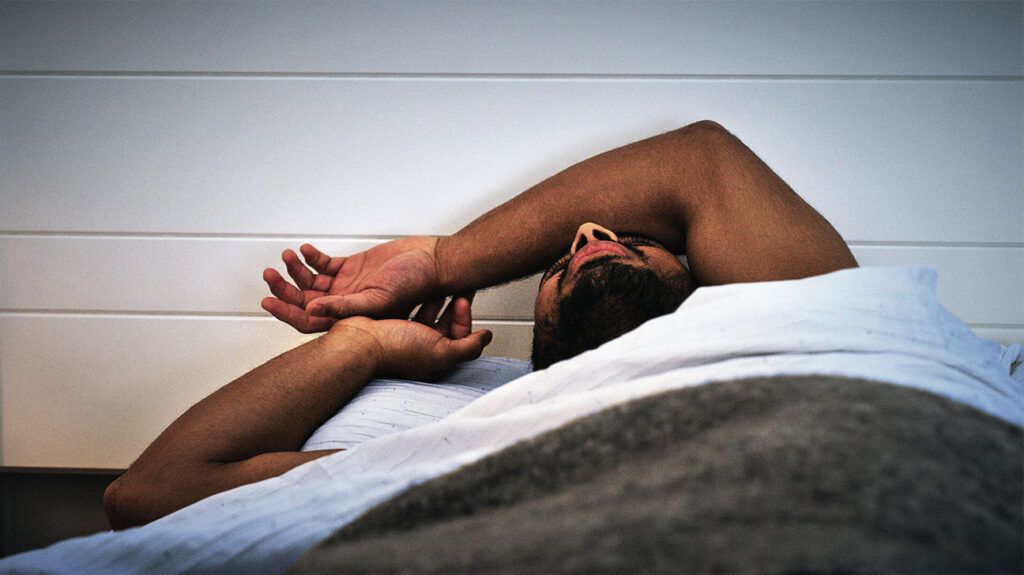Vertigo is the sensation that a person’s surroundings are spinning or moving. It has many potential causes, including inner ear or nervous system disorders.
Ear infections, migraine, Ménière’s disease, and certain medications may all cause vertigo. This type of dizziness can become intense and cause nausea, vomiting, and difficulty with balance.
Learn more about the causes and treatments for vertigo.

Vertigo is a type of dizziness that makes a person feel like their body, head, or surroundings are moving or spinning. It is a
For example, lightheadedness makes people feel “woozy” or like they may faint. Vertigo does not necessarily cause this.
There are two main types of vertigo, each with a different range of potential causes. They are:
- peripheral vertigo, which occurs due to problems with the inner ear, or the vestibular nerve in the ear
- central vertigo, which occurs due to issues with the central nervous system, which includes the brain and spinal cord
Learn more about vertigo.
The following list highlights some of the more common causes of vertigo.
This is not a comprehensive list. People with persistent vertigo should speak with a doctor for a diagnosis.
Benign paroxysmal positional vertigo (BPPV)
BPPV is a common condition that occurs when crystals or debris collect in part of the inner ear. This results in temporary but frequent vertigo episodes. According to some reports, this can last
The vertigo may worsen with certain movements or when a person moves their head. For example, it may occur when a person bends down to pick something up.
Other symptoms may include:
- nausea
- vomiting
- nystagmus, or repetitive involuntary eye movements
Unlike other inner ear conditions, BPPV does not affect hearing or cause tinnitus. Although it can be distressing and uncomfortable and may cause falls in some people, the condition itself is not serious.
BPPV can get better on its own in weeks or months. Some people have it for longer or find the symptoms come back after going away. Specific exercises that reposition the crystals inside the ear may help.
Learn more about BPPV.
Vestibular migraine
Some people with migraine experience vertigo during migraine episodes. This is known as vestibular migraine, and the symptoms
- a headache, often on one side of the head
- sensitivity to light or sound
- nausea
- vomiting
According to the American Migraine Foundation, vestibular migraine is the second most common cause of vertigo in adults. Not everyone who has vestibular migraine experiences pain, though. Some people have vertigo and other symptoms with no headache.
There is no cure for vestibular migraine, but treatments are available.
Learn more about vestibular migraine.
Inner ear infections
The inner ear plays a vital role in a person’s sense of balance. Any disturbance or disruption to the inner ear can cause disorientation in the brain and body, resulting in vertigo.
An example of an inner ear problem is labyrinthitis, which usually occurs due to a virus. The symptoms of labyrinthitis include:
- vertigo
- difficulty with balance, which may affect a person’s ability to stand still or walk
- nausea or vomiting
- hearing loss
- tinnitus
Labyrinthitis can come on suddenly and may get worse during the day. Because it is often the result of an infection, it usually goes away on its own.
According to the National Health Service (NHS) in the United Kingdom, the symptoms typically start getting better in a few days, and people often recover within 2 to 6 weeks.
Learn more about inner ear infections.
Vestibular neuritis
Vestibular neuritis is another type of ear inflammation. It usually occurs due to a viral infection. It involves nerve inflammation in the inner ear, which sends messages to the brain.
The symptoms of vestibular neuritis are similar to those of labyrinthitis, but it does not cause tinnitus or hearing changes. The NHS indicates that the condition usually gets better on its own in several weeks, but sometimes people need treatment for longer-term balance problems.
Learn more about vestibular neuritis.
Head injury
According to a 2022 review, dizziness is the second most common symptom of a head injury after pain. It can be the result of a concussion or mild traumatic brain injury. When this symptom persists long after the injury, doctors call it post-concussive dizziness (PCD) or post-concussion syndrome (PCS).
PCD may involve various types of dizziness, including vertigo. The vertigo may be present all the time or only sometimes. Sometimes, it may be the only symptom of a concussion. Other symptoms can include:
- headache
- fatigue
- nausea or vomiting
- tinnitus
- vision changes
- difficulty concentrating
- irritability
- memory loss, such as forgetting what happened around the time of the injury
According to the review, 85% to 90% of people who experience concussion get better in days or weeks of the head injury. Rest, mentally and physically, is the main recommendation immediately after the concussion.
If dizziness continues for more than 3 weeks, a person may need treatment.
Learn about head injuries.
Some other potential causes of vertigo include:
- Ménière’s disease: This is a rare, chronic condition of the inner ear that causes vertigo and balance problems and can affect hearing. The symptoms of Ménière’s disease come and go, starting suddenly and lasting up to 24 hours.
- Ramsay Hunt syndrome: This syndrome can occur if the Varicella-zoster virus lies dormant in a vestibular or facial nerve and then reactivates, causing inflammation and a rash.
- Mental health conditions: Sometimes, vertigo can be a physical manifestation of a mental health condition. Stress, anxiety, panic disorder, and depression have associations with dizziness.
- Multiple sclerosis (MS): According to a 2022 case report and review, vertigo is one of the less common symptoms of MS. Though there are not many reports of this, it could be the first symptom in some cases.
- Otosclerosis: In this condition, bone grows in the middle ear where it should not be, resulting in hearing loss. Sometimes, it also causes vertigo.
- Cholesteatomas: Cholesteatomas are lesions similar to cysts that contain keratin. According to research, they can form inside the ear,
oftenTrusted Source in the middle ear. - Tumors: Some types of tumor that affect the ear or certain parts of the brain may result in vertigo.
Learn about cervical vertigo.
Treatment for vertigo depends on the cause. Some underlying causes for vertigo, such as ear infections, vestibular neuritis, and head injuries, often get better on their own.
Where the cause is persistent or requires treatment, people may need:
- Medications: Certain drugs may help to control or reduce vertigo, nausea, and vomiting. Anti-inflammatory drugs may help with conditions such as vestibular neuritis or Ramsay Hunt syndrome, while migraine and MS require specific medications.
- Vestibular rehabilitation: This treatment involves practicing maneuvers that help “train” the vestibular system. In BPPV, rehabilitation can also help disperse crystal deposits in the ear, which may relieve symptoms. The Epley maneuver is a typical example.
- Lifestyle changes: For some, lifestyle changes are necessary to manage an ongoing condition and reduce their vertigo episodes. For example, those with vestibular migraine may be able to identify and avoid triggers.
- Dietary changes: Some people with migraine and Ménière’s disease may find dietary changes reduce their symptoms. For example, people with Ménière’s disease can be more sensitive to caffeine, alcohol, or a high-salt diet.
- Surgery: Cholesteatomas, otosclerosis, and tumors can require surgery to remove atypical growths.
Learn about some home remedies to treat vertigo.
People with persistent vertigo should speak with a doctor for a diagnosis. This is particularly important if the vertigo:
- goes away and then comes back
- occurs alongside tinnitus or hearing loss
- interferes with daily activities
Vertigo can sometimes be a symptom of a serious or life threatening condition. Anyone who experiences any of the following along with vertigo should dial 911 or go to an emergency department:
- slurred speech
- paralysis
- difficulty with physical coordination
- difficulty understanding speech
- a severe, sudden headache
- a sudden loss of vision or hearing
- loss of consciousness
- seizures
Vertigo is a type of dizziness that causes a spinning sensation, making a person feel like their surroundings are moving. This can result in nausea, difficulty standing or walking, and vomiting.
Many conditions may lead to vertigo. Often, they are disorders of the ear or central nervous system, both of which influence balance. Common causes include BPPV, vestibular migraine, ear infections, and head injuries.
Many causes of vertigo, such as ear infections, can improve on their own without treatment. But sometimes, the symptoms persist and may require medication, vestibular rehabilitation, or, in some cases, surgery.


